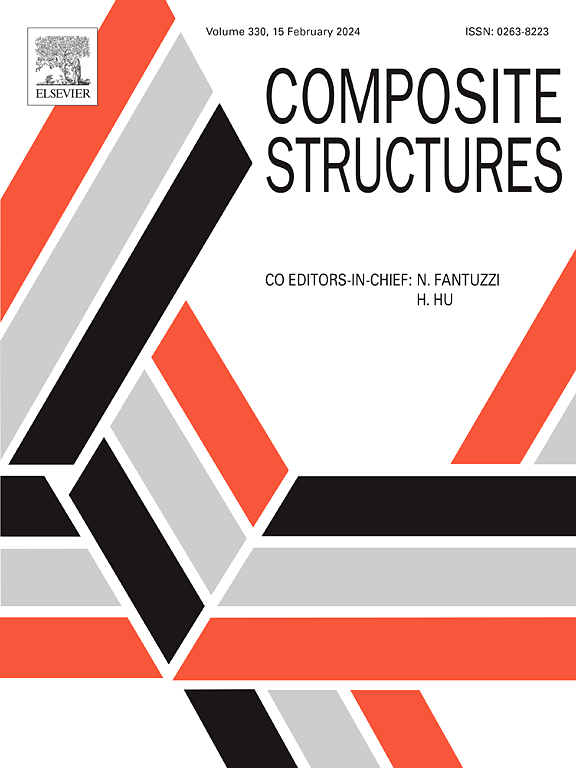基于多尺度不确定性和人工神经网络的机织cmc结构可靠性预测框架
IF 6.3
2区 材料科学
Q1 MATERIALS SCIENCE, COMPOSITES
引用次数: 0
摘要
研究了编织陶瓷基复合材料在编织和致密化过程中产生的介观几何参数和性能参数的不确定性。基于多尺度随机传播的概念,提出了一种结构可靠度的神经网络预测方法。通过纤维试验得到纤维模量、强度和半径的分布,并以此模拟纱线的细观性能分布。利用XCT导出了介观几何参数分布,并采用和声搜索算法对参数组合进行优化。采用多尺度模拟方法建立数据集。建立了两级人工神经网络可靠性预测代理模型,对结构失效载荷的平均预测误差为3.81%,预测的失效区域与试验结果一致。基于PAWN和SHAP方法的细观参数敏感性分析表明,小轴长度对结构破坏载荷有显著影响。本文章由计算机程序翻译,如有差异,请以英文原文为准。
Reliability prediction framework for woven CMCs structures based on multi-scale uncertainty and artificial neural networks
This study addressed the uncertainties in mesoscopic geometric and performance parameters of woven ceramic matrix composites induced during the weaving and densification processes. Based on the concept of multi-scale stochastic propagation, a neural network prediction method for structural reliability was proposed. Fiber tests were conducted to obtain the distributions of fiber modulus, strength, and radius, which were used to simulate the mesoscopic performance distribution of yarns. Mesoscopic geometric parameter distributions were derived from XCT, and the harmony search algorithm was employed to optimize parameter combinations. A dataset was established using multi-scale simulation methods. A two-level ANN reliability prediction surrogate model was developed, achieving an average prediction error of 3.81% for the structural failure load, with the predicted failure regions aligning with experimental results. Sensitivity analysis of mesoscopic parameters based on the PAWN and SHAP methods revealed that the minor-axis length has a significant influence on the structural failure load.
求助全文
通过发布文献求助,成功后即可免费获取论文全文。
去求助
来源期刊

Composite Structures
工程技术-材料科学:复合
CiteScore
12.00
自引率
12.70%
发文量
1246
审稿时长
78 days
期刊介绍:
The past few decades have seen outstanding advances in the use of composite materials in structural applications. There can be little doubt that, within engineering circles, composites have revolutionised traditional design concepts and made possible an unparalleled range of new and exciting possibilities as viable materials for construction. Composite Structures, an International Journal, disseminates knowledge between users, manufacturers, designers and researchers involved in structures or structural components manufactured using composite materials.
The journal publishes papers which contribute to knowledge in the use of composite materials in engineering structures. Papers deal with design, research and development studies, experimental investigations, theoretical analysis and fabrication techniques relevant to the application of composites in load-bearing components for assemblies, ranging from individual components such as plates and shells to complete composite structures.
 求助内容:
求助内容: 应助结果提醒方式:
应助结果提醒方式:


